3-(2-Pyrrolidinyl)pyridine
Synonym(s):(±)-Nornicotine;2-(3-Pyridyl)pyrrolidine;3-(2-Pyrrolidinyl)pyridine
- CAS NO.:5746-86-1
- Empirical Formula: C9H12N2
- Molecular Weight: 148.21
- MDL number: MFCD00016913
- EINECS: 637-353-0
- SAFETY DATA SHEET (SDS)
- Update Date: 2025-03-06 08:32:39
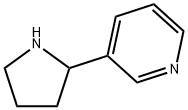
What is 3-(2-Pyrrolidinyl)pyridine?
Description
(±)-Nornicotine is a metabolite of nicotine that acts as a neuronal nicotinic acetylcholine receptor (nAChR) agonist. The α6 and α7 subunit-containing neuronal nAChRs are particularly responsive to nornicotine with EC50 values of approximately 4 and 17 μM, respectively, when expressed in Xenopus oocytes. Nornicotine promotes cell migration and destabilizes cell-cell junctions in an endothelial cell line. It is generally thought to be free from abuse potential, but it has been self-administered by rats. It can be detected in urine.
Chemical properties
Colourless Oil
The Uses of 3-(2-Pyrrolidinyl)pyridine
3-(2-Pyrrolidinyl)pyridine is a tobacco alkaloid and the major Nicotine (N412420) metabolite in brain. Nornicotine appears to activate different nAChR subtypes, has a better pharmacokinetic profile, and produces less toxicity than Nicotine. Nornicotine shows a significant analgesic activity. Nicotine USP Related Compound F (3-(pyrrolidine-2-yl)pyridine).
The Uses of 3-(2-Pyrrolidinyl)pyridine
A metabolite of Nicotine. Can catalyze aqueous aldol reactions
The Uses of 3-(2-Pyrrolidinyl)pyridine
A metabolite of Nicotine ((N412420). Can catalyze aqueous aldol reactions.
What are the applications of Application
(R,S)-Nornicotine is a metabolite of Nicotine
Synthesis Reference(s)
Tetrahedron Letters, 37, p. 1137, 1996 DOI: 10.1016/0040-4039(96)00002-0
Safety Profile
Poison by intraperitoneal route.When heated to decomposition it emits very toxic fumesof NOx and HCl. See also NORNICOTINE
Properties of 3-(2-Pyrrolidinyl)pyridine
| Melting point: | 235-236 °C(Solv: ethanol (64-17-5)) |
| Boiling point: | 107-108°C 2mm |
| Density | 1,074 g/cm3 |
| refractive index | 1.54 |
| Flash point: | 101°C |
| storage temp. | 2-8°C |
| solubility | H2O: 50 mg/mL |
| form | liquid |
| pka | 9.09±0.10(Predicted) |
| Specific Gravity | 1.074 |
| color | yellow |
| Water Solubility | Soluble in acetone, chloroform and water (50mg/ml). |
| Merck | 14,6712 |
| BRN | 81968 |
| Stability: | Hygroscopic, Light Sensitive, Moisture Sensitive |
| CAS DataBase Reference | 5746-86-1(CAS DataBase Reference) |
Safety information for 3-(2-Pyrrolidinyl)pyridine
| Signal word | Warning |
| Pictogram(s) |
 Exclamation Mark Irritant GHS07 |
| GHS Hazard Statements |
H315:Skin corrosion/irritation H319:Serious eye damage/eye irritation H335:Specific target organ toxicity, single exposure;Respiratory tract irritation |
| Precautionary Statement Codes |
P261:Avoid breathing dust/fume/gas/mist/vapours/spray. P280:Wear protective gloves/protective clothing/eye protection/face protection. P301+P312:IF SWALLOWED: call a POISON CENTER or doctor/physician IF you feel unwell. P305+P351+P338:IF IN EYES: Rinse cautiously with water for several minutes. Remove contact lenses, if present and easy to do. Continuerinsing. |
Computed Descriptors for 3-(2-Pyrrolidinyl)pyridine
New Products
Methyl (R)-1-Boc-4,4-difluoropyrrolidine-2-carboxylate 2,2-Difluoropropylamine hydrochloride tert-butyl 3-bromoazetidine-1-carboxylate (R)-1-Boc-3-hydroxypyrrolidine DIFLUOROACETIC ANHYDRIDE 2,2-Difluoropropionic acid Diallylamine, 99% Calcium hydroxide, 95% Aluminum oxide, basic 2-Bromophenylacetonitrile, 97% L-tert-Leucine,97% N-Hydroxy-2-methylpropanimidamide 4-(3,4-Dichlorophenyl)-3,4-Dihydro-N-Methyl-1-(2H)-Naphthalenimine (Schiff Base) 2-AMINO-3,5-DIBROMO BENZALDEHYDE [ADBA] L-Glutamic Acid Dimethyl Ester Hcl 10-Methoxy-5H-dibenz[b,f]azepine 5-Cyanophthalide N, N-Carbonyldiimidazole (CDI) Dibenzoyl Peroxide Titanium Dioxide 2-(Methylthio) Benzonitrile Sodium Acetate Anhydrous Allopurinol 1,5-DibromopentaneRelated products of tetrahydrofuran
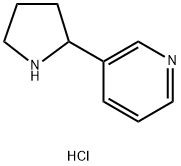
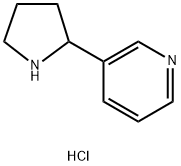

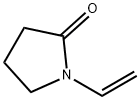
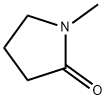
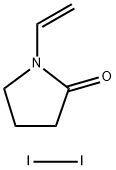
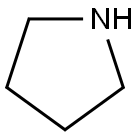
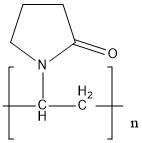
You may like
-
 (±)-Nornicotine solution CAS 5746-86-1View Details
(±)-Nornicotine solution CAS 5746-86-1View Details
5746-86-1 -
 Nicotine Related Compound F CAS 5746-86-1View Details
Nicotine Related Compound F CAS 5746-86-1View Details
5746-86-1 -
 (±)-Nornicotine CAS 5746-86-1View Details
(±)-Nornicotine CAS 5746-86-1View Details
5746-86-1 -
 Nicotine Related Compound F CAS 5746-86-1View Details
Nicotine Related Compound F CAS 5746-86-1View Details
5746-86-1 -
 Ethyl-2-Chloroacetoacetate 609-15-4View Details
Ethyl-2-Chloroacetoacetate 609-15-4View Details
609-15-4 -
 609-15-4View Details
609-15-4View Details
609-15-4 -
![1-(6-Methylpyridin-3-Yl)-2-[4-(Methylsulfonyl)Phenyl]Ethanone [Ketosulfone] 99%](https://img.chemicalbook.in//Content/image/CP5.jpg) 1-(6-Methylpyridin-3-Yl)-2-[4-(Methylsulfonyl)Phenyl]Ethanone [Ketosulfone] 99%View Details
1-(6-Methylpyridin-3-Yl)-2-[4-(Methylsulfonyl)Phenyl]Ethanone [Ketosulfone] 99%View Details
221615-75-4 -
 27143-07-3View Details
27143-07-3View Details
27143-07-3
